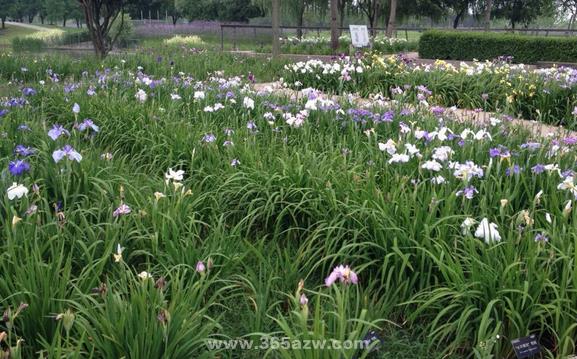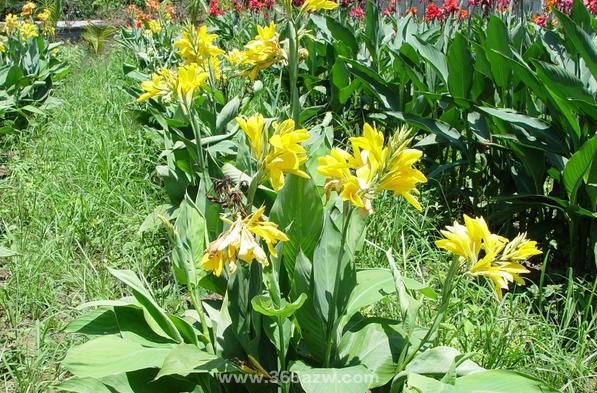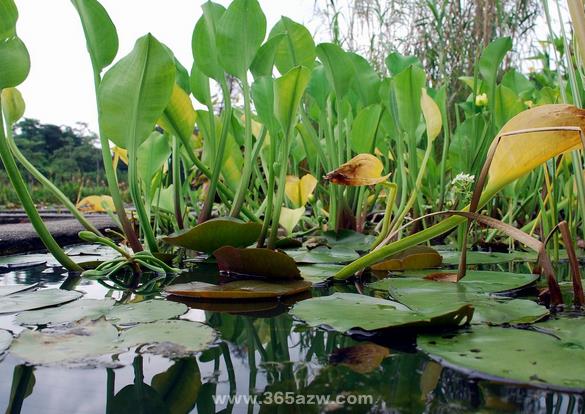Do you know the species of aquatic plants?
In a broad sense, aquatic plants include all marsh, submerged or floating plants. It can be said that all plants that can grow in water can be called aquatic plants. Next, I will introduce the species of aquatic plants to you.

Aquatic plant species
The water-standing aquatic plants are tall and colorful, and most of them are divided into stems and leaves, erect and erect, the lower part or base sinks in the water, the roots or stems grow in the mud, and the upper plants stand out of the water. There are many kinds of water-standing plants, such as lotus, calamus, spring onion, Zili flower, barracuda grass, flower Reed, cattail, alisma alisma, parasol, Reed, Zizania caduciflora and so on.
Floating-leaf plants are also one of the species of aquatic plants, floating-leaf aquatic plants have well-developed rhizomes, large flowers, colorful flowers, no obvious aboveground stems or stems can not stand upright, leaves floating on the surface of the water. Common species are king lotus, water lily, Pingpeng grass, Euryale seed, herb and so on.
Floating plants, such as Euphorbia angustifolia or hyacinth, can also absorb nutrients dissolved in water through slender roots. Deep-water plants such as Euphorbia and Nymphaea, which have roots at the bottom of the pond and flowers and leaves floating on the surface, provide shade for pond creatures and limit the growth of algae.
The species of submerged aquatic plants can be regarded as terrestrial plants in the water. The roots of submerged aquatic plants grow in the mud, and the whole plant sinks into the water with well-developed aerated tissue, which is conducive to gas exchange. Most of the leaves are long and narrow or filamentous, which can absorb some nutrients in the water and can grow and develop normally under the condition of weak light under water.

Characteristics of aquatic plants
1. Their leaves are soft and transparent, and some are filamentous (such as goldfish algae). Filamentous leaves can greatly increase the contact area with water, so that the leaves can maximize the light and absorb little carbon dioxide dissolved in the water, so as to ensure photosynthesis.
two。 Another prominent feature of aquatic plants is that they have well-developed aerated tissue. Lotus root is the most typical example. There are many holes in its petiole and lotus root, which is the airway. The hole and the hole are connected and run through each other to form a network of channels for conveying gas. In this way, it can survive even if it grows in sludge without oxygen or lack of oxygen. Ventilatory tissue can also increase buoyancy and maintain body balance, which is also very good for aquatic plants.
3. The adaptation mechanism of aquatic plants to the low-salt environment: their vacuoles are relatively large and contain more water, and the salt content in the vacuoles is relatively small, so that the salt in the environment is absorbed into the vacuoles, increasing the salt content in the vacuoles and reaching a balance.

How to raise aquatic plants
Many aquatic plants are very adaptable, so how to raise aquatic plants? Unlike other plants, aquatic plants are rarely planted alone for ornamental purposes. Almost all aquatic plants are important for creating good ecosystems.
A good ecological environment is the basis for maintaining the beauty of the water body, which requires a reasonable balance of different aquatic plants to adjust the levels of light, oxygen and nutrition. in order to create an aquatic environment suitable for the prosperous growth of both animals and plants.
Aquatic plants should be planted according to the habits of different species or varieties. In garden construction, there are two different technical ways to plant aquatic plants. One is to build a planting trough at the bottom of the pond, laying with at least 15 centimeters of thick soil to implant the aquatic plants into the soil, and the other is to put the aquatic plant species in the container and then sink the container into the water.

The above is an introduction to the species of aquatic plants. I hope you like it.
Related
- Wuhan Hospital Iron Tree Blooming Result Was Instantly Frightened by the Gardener Master
- Which variety of camellia is the most fragrant and best? Which one do you like best?
- What is the small blue coat, the breeding methods and matters needing attention of the succulent plant
- Dormancy time and maintenance management of succulent plants during dormancy
- Minas succulent how to raise, Minas succulent plant pictures
- What are the varieties of winter succulent plants
- How to raise succulent plants in twelve rolls? let's take a look at some experience of breeding twelve rolls.
- Attention should be paid to water control for succulent plants during dormant period (winter and summer)
- Watering experience of twelve rolls of succulent plants
- Techniques for fertilizing succulent plants. An article will let you know how to fertilize succulent plants.



